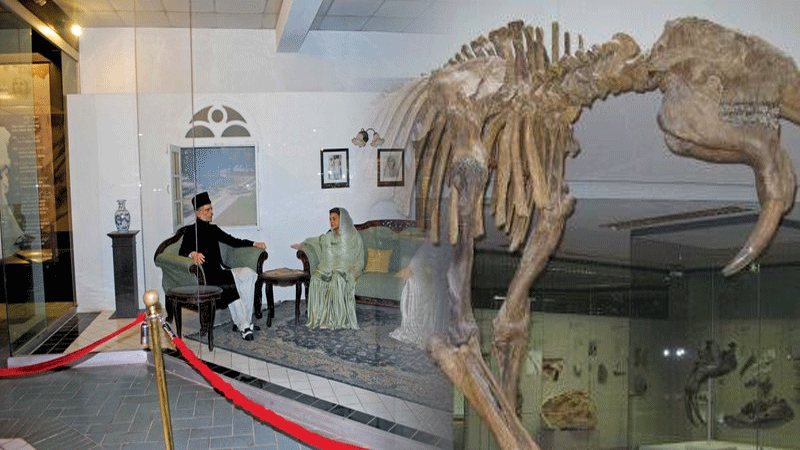Despite making a significant contribution to identification of natural history, and research activities in our nation, PMNH does not receive the respect it deserves from the authorities.

The Pakistan Museum for Natural History (PMNH) in Islamabad, which is run by the Pakistan Science Foundation (PSF), is the only museum that has preserved the 1.5 million specimens of priceless natural resources amassed from all over the country.
The museum saw 7218 visitors in November 2022, 13910 in October, 11530 in September, 15643 in August, 23,761 in July, 18,121 in June, 19,656 in May, 2351 in April, 11912 in March, 14577 in February, and 18737 in January.
Through 86,587 visitors, the museum earned Rs. 6,398,755 in revenue for the fiscal year 2021–2022, the Acting Director General of PMNH, Dr. Saima Huma Tanveer informed.
Despite making a significant contribution to the collection, preservation, identification of natural history, and research activities in our nation, the one-of-a-kind PMNH does not receive the respect it deserves from the authorities.
The Pakistan Museum of Natural History (PMNH) is located in Islamabad, the capital of Pakistan. It was established in 1976 and is one of the leading natural history museums in the country. The museum is dedicated to the preservation, study, and display of the natural history of Pakistan, including its geology, wildlife, and plants.
The museum includes a cutting-edge gemstone gallery, a gallery showcasing biodiversity, and galleries displaying Pakistani birds, dinosaurs, fossils, higher plants, medicinal plants, lower plants, mammals, reptiles, and fish.
Being the only one of its kind, this museum serves as an educational resource for the thousands of students and researchers who visit it every day, and the administration works within its means to give them a comfortable environment and the most amenities possible.
Dr. Saima Huma Tanveer, stated, “PC-I for the construction of six additional blocks of the museum at a proposed cost of Rs. 2 billion was approved last year to expand its display and activities to benefit students.
“As the funds could not be allocated during the last budget due to an economic crunch and a devastating flood, the expansion is delayed. “We hope that allocations are made during the next budget,” she said.
The PMNH is conducting a number of research projects of national significance under the direction of Dr. Saima Tanveer, including the “cooperative development of an innovative auto-ID platform for beetles (order Cleoptera) from China and Pakistan” at a cost of Rs. 5 million.
Other projects include “Hazards of wildlife aircraft strikes and their prevention,” which will cost Rs. 4.3 million to complete, and “Biosystematics of Insect Fauna of Khunjerab National Park, Gilgit Baltistan,” which will cost Rs. 4.5 million to complete.
The development of an outdoor volcano display, the incorporation of QR code technology so that visitors can scan the code of the exhibit with their Android phone and get all related information, the creation of a STEM Resource Lab for teachers, the upkeep of the museum building, and other projects are among the others.
Another innovative idea from the DG PMNH is to launch a training program for schoolchildren to teach them how to film quick videos and learn about nature conservation practices.
The PMNH prepared 16 technical reports for field surveys and baseline studies of floral and faunal diversity in Khyber Pakhtunkhwa (KP) merged districts under the “Ten Billion Tree Tsunami (BTTP)” project. The collections made included 10,783 specimens, including flora, fauna, rocks, and fossils from across the country.
The administration ensured the cataloguing of 21,193 specimens, and 7,695 samples were also digitized. PMNH regularly organizes trainings, workshops, seminars, symposia, and other interactive educational activities on the natural history, environment, and biodiversity of the country.
It has also formed national and international liaisons with other research institutes within the country and abroad. The authorities must pay heed to this museum for preserving our natural assets for the coming generations.